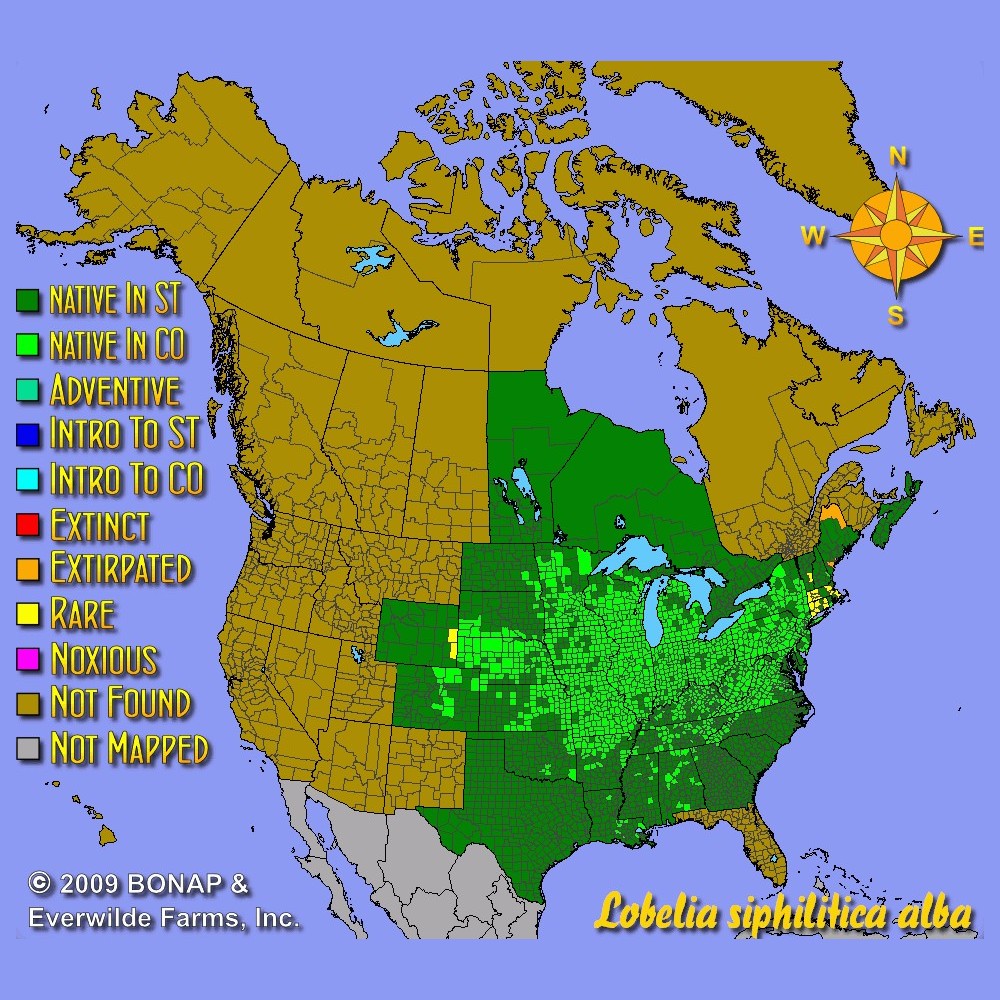Great White Blue Lobelia Seeds
Lobelia siphilitica alba
- HOW TO GROW
- FAST FACTS
HOW TO GROW
Sowing: Direct sow in late fall, planting on the surface of the soil since these seeds need light to germinate. For spring planting, mix the seed with moist sand and store it in the refrigerator for 60 days before planting. To start indoors, sow the seed 6-8 weeks before the last frost of spring and keep the soil lightly moist until germination. Transplant the seedlings as soon as they can safely be handled and there is no chance of frost.
Growing: Keep seedlings well watered and control weeds. These plants need continual moisture, and thrive even in very wet soil. To encourage bushier growth, pinch back the stems before they bloom. These plants may self-sow in good growing conditions. Mature plants can be divided in early spring. These flowers attract hummingbirds and butterflies, and flourish near ponds or streams.
Harvesting: These blooms make excellent cut flowers. Choose stalks with flowers that have just opened and place them in water immediately; strip the foliage that will fall below the surface of the water.
Seed Saving: As soon as the flowers fade, watch the seed heads carefully since the tiny seed can easily blow away in the wind. Shake the seed heads over a container to remove the ripe seed; repeat until all the seed has ripened. Store the cleaned seed in a cool, dry place.
FAST FACTS
Latin Name: Lobelia siphilitica alba
Species Origin: US Native Wildflower
Type: Native Wildflowers
Life Cycle: Perennial
USDA Zones: 3, 4, 5, 6, 7, 8
US Regions: Plains/Texas, Midwest, Northern, Northeast, Southeast
Seeds per Ounce: 800,000
Stratification: Cold/Wet for 8 Weeks
Germination Ease: Stratify 8 Weeks
Sunlight: Full Sun, Part Sun
Height: 30 Inches
Color: White
Bloom Season: Blooms Late Summer, Blooms Early Fall, Blooms Late Fall
DESCRIPTION

HOW TO GROW
Sowing: Direct sow in late fall, planting on the surface of the soil since these seeds need light to germinate. For spring planting, mix the seed with moist sand and store it in the refrigerator for 60 days before planting. To start indoors, sow the seed 6-8 weeks before the last frost of spring and keep the soil lightly moist until germination. Transplant the seedlings as soon as they can safely be handled and there is no chance of frost.
Growing: Keep seedlings well watered and control weeds. These plants need continual moisture, and thrive even in very wet soil. To encourage bushier growth, pinch back the stems before they bloom. These plants may self-sow in good growing conditions. Mature plants can be divided in early spring. These flowers attract hummingbirds and butterflies, and flourish near ponds or streams.
Harvesting: These blooms make excellent cut flowers. Choose stalks with flowers that have just opened and place them in water immediately; strip the foliage that will fall below the surface of the water.
Seed Saving: As soon as the flowers fade, watch the seed heads carefully since the tiny seed can easily blow away in the wind. Shake the seed heads over a container to remove the ripe seed; repeat until all the seed has ripened. Store the cleaned seed in a cool, dry place.
FAST FACTS
Latin Name: Lobelia siphilitica alba
Species Origin: US Native Wildflower
Type: Native Wildflowers
Life Cycle: Perennial
USDA Zones: 3, 4, 5, 6, 7, 8
US Regions: Plains/Texas, Midwest, Northern, Northeast, Southeast
Seeds per Ounce: 800,000
Stratification: Cold/Wet for 8 Weeks
Germination Ease: Stratify 8 Weeks
Sunlight: Full Sun, Part Sun
Height: 30 Inches
Color: White
Bloom Season: Blooms Late Summer, Blooms Early Fall, Blooms Late Fall




